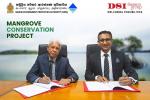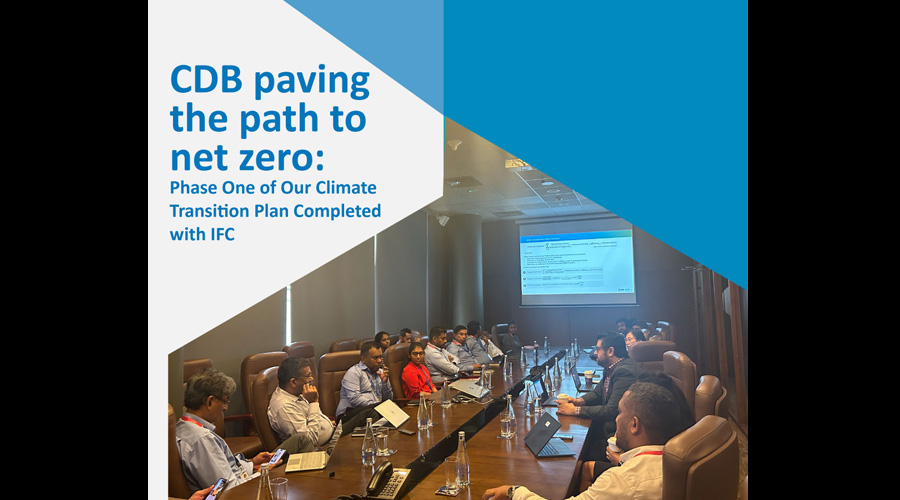With technical assistance received from the International Finance Corporation (IFC) and support from the European Union under their ‘Accelerating Climate Smart and Inclusive Infrastructure in South Asia (ACSIIS)' program, this foundational phase of the Climate Transition Plan is a robust framework that quantifies and manages operational and portfolio emissions.
Deputy CEO of CDB Damith Tennakoon recalls that in April 2024, CDB inked a technical assistance agreement with the International Finance Corporation (IFC) to enhance the Company’s plans for sustainable growth that benefits everyone.
“The collaboration planned in three phases, supports us in conducting an emissions baseline analysis towards a net zero strategy, expand our product portfolio to finance sustainable solutions to extreme weather events, and develop a carbon credit aggregation business model aligned with climate commitments.”
He explains that CDB now has a clear actionable framework to manage key levers, including the green asset ratio needed to reduce the GHG intensity, even as CDB’s portfolio grows.
“We sincerely appreciate the IFC team for helping us in this journey and taking us forward with greater clarity and confidence in our net zero journey.
With the successful conclusion of Phase I, the groundwork has been laid for the next stage of our transformative journey, reinforcing our commitment to sustainability, innovation and national climate objectives.”
This initiative is a key component of CDB’s Sustainability Agenda under the Net Zero pillar, reinforcing its commitment to reducing its carbon footprint and achieving net zero emissions.
In alignment with Sri Lanka’s national climate goals, CDB is working towards eliminating emissions across business operations.
The comprehensive Climate Transition Plan provides a strategic roadmap grounded in country-driven priorities in Sri Lanka as well as global standards, ensuring that sustainability efforts are both measurable and impactful.
Phase I was supported through a series of in-depth virtual and in-person workshops conducted by IFC, significantly strengthening CDB’s internal technical capabilities.
This phase, which encompasses a carbon baseline analysis and the development of a net zero strategy, saw the methodology and the data captured reviewed to estimate the direct and indirect emissions by assets.
With feedback and guidance to develop options for emission reduction and prioritize actions, IFC assisted CDB in analyzing Scope 3 financed emissions.
This included devising suitable methodology aligned with international standards, identifying key drivers in CDB’s financed Scope 3 emissions, top carbon intensive segments and determining carbon intensity in CDB’s loan portfolio.
In addition, IFC also supported CDB to project future estimated financed Scope 3 emissions based on the growth trajectories of CDB’s portfolio and suggested suitable transition strategies.
CDB now moves into Phases 2 and 3, which involve the scaling of sustainable finance products as well as the design and implementation of a carbon credit aggregation business model.






















